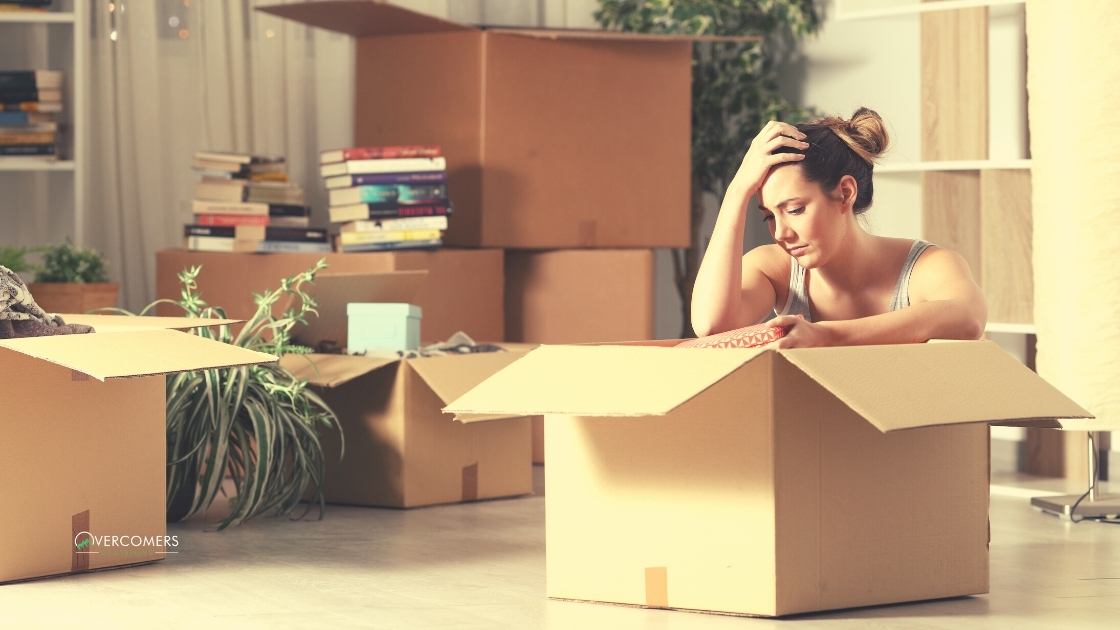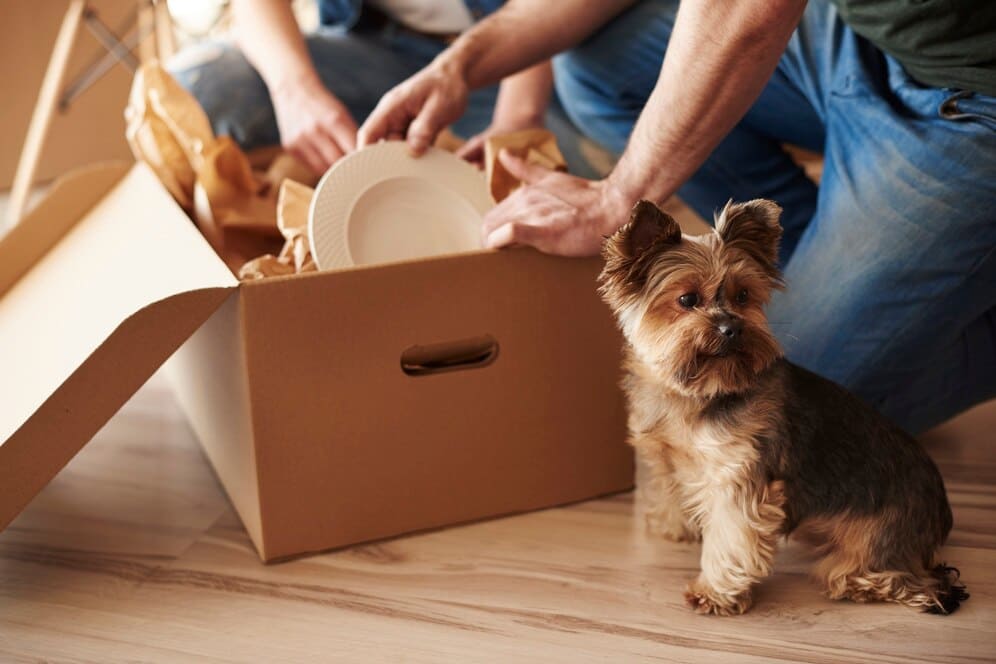Safely Pack Photos For Long-term Storage

- Lay down a thick blanket on a flat surface
- Get a mirror box, and tape one end closed
- Wrap the picture frame with packing paper
- Secure with packing tape
- Repeat with bubble wrap
- Stuff the bottom of the box with wadded-up packing paper
- Insert the frame into the box
- Tape the box shut with packing tape, and label it as “fragile”
If you’ve been wondering how to pack your precious photos for long-term storage, Paradise Moving & Storage is going to take you through the best way to pack and store them safely, whether you’re moving or just want to preserve them for posterity.
Lay down a thick blanket on a flat surface
First, you need to set up a safe workspace for your pictures. Find a flat surface nearby, such as a table or a clean floor, and lay out a thick blanket on top of it.
Why a blanket, you ask? Well, the softness of the blanket acts as a cushion, protecting your photos and frames from any scratches or damage that might occur from hard surfaces.

Make sure the blanket is spread evenly without any lumps or folds.
Get a mirror box, and tape one end closed
Now that your comfortable and safe area is set up, it’s time to use the mirror box. It’s designed for transporting large, flat items — that’s why it’s perfect for your photo frames.
First, get your mirror box and unfold it. One thing you’ll notice is that one end of the box is not sealed. Fix that — take strong and durable packing tape and tape that end shut. Don’t just stick on one strip and be done with it, go around the edges as well.
The last thing you want is for the bottom to fall out while you’re moving the box.
Wrap the picture frame with packing paper
Your next task is to wrap your picture frame with packing paper. Here’s how to do it step-by-step:
- Lay out your packing paper. Make sure it’s clean and large enough to cover your entire frame.
- Place your frame face-down on the paper. This way, you’re protecting the most delicate part of the frame — the glass.
- Now, start wrapping your frame like a gift. Bring one side of the paper over the frame, then the other. Secure each fold with a piece of tape.
- Take care of the edges as they can be vulnerable during moves. Fold in the paper at the corners, creating a sort of envelope around the frame. Again, secure each fold with tape.
- One layer of paper is good, but why not double up for extra protection? Repeat the process with another sheet of packing paper.
Don’t rush off just yet, there are other steps to ensure your photo frames are packed perfectly for long-term storage.
Secure with packing tape
The effectiveness of the wrap on your picture frame depends on how well it’s secured.
Make sure you’re using high-quality packing tape for this task as everyday household tapes like scotch or masking tape won’t be strong enough to hold up during a move or long-term storage.
Apply the tape to where the packing paper overlaps on your frame. Make sure that the tape sticks to both sides and goes all the way across the overlap. It’s best to pay special attention to the corners of your frame, which are areas that need extra care. Add more tape around each corner to strengthen them.
After tapping the entire frame, check your work. The tape should lay smooth, with no bubbles or loose ends. If there are any weak or exposed areas, use more tape.
Repeat with bubble wrap
Bubble wrap is necessary for extra protection. It is excellent for cushioning and absorbing shock so it can successfully protect your photo frames.
- Start by unrolling a sheet of bubble wrap on a clean, flat surface. The size of the sheet should be ample enough to completely cover your picture frame.
- Place your already-wrapped frame on top of the bubble wrap. Like the packing paper, set the frame face-down to safeguard its glass components. The bubbles must face inward to offer maximum cushioning.
- Begin wrapping the frame in the bubble wrap. Start from one side and carefully roll the frame, enveloping it in the bubble wrap as you go along. Ensure that every part of the frame, including the corners and edges, is well-covered and padded.
- When the frame is completely wrapped in bubble wrap, use packing tape to secure it. Apply the tape generously, ensuring that the bubble wrap stays firmly in place around the frame. Focus on the corners and edges, as they are the most delicate parts of the frame.
- After wrapping and taping the frame, gently shake it to ensure stability. The bubble wrap should not move or come off the frame. If it does, you may need to add more tape or adjust the wrapping.
Adding a layer of bubble wrap increases your picture frame’s protection level — it is essential when packing your precious memories.
Stuff the bottom of the box with wadded-up packing paper
To prevent any damage during transport, you must first stuff the box’s bottom with wadded-up packing paper.
Start by taking sheets of packing paper and crumpling them into loose balls. The aim here is not to create tightly wadded balls, but rather loosely crumpled paper that can provide enough padding and fill the voids in the box.
Ensure you have enough wadded-up paper to create a substantial layer at the bottom of the box. When enough packing paper is piled at the box’s base, slip your wrapped photo frame in. The cushioned base should cradle your frame.
Insert the frame into the box
After preparing your box with a cushioned base of packing paper, carefully place your securely wrapped picture frame inside carefully:
- Start by gently picking up your bubble-wrapped frame. Lift it using both hands, supporting the frame from beneath to prevent any undue pressure on the glass or frame itself.
- Before you put the frame in the box, check the space inside. The box should have enough room for the frame to fit comfortably, but not be too big that it moves around during moving.
- Lower the frame into the box slowly, and lay it flat against one of the box’s sides instead of putting it in the center. Make sure the frame is securely in place inside the box to prevent it from moving during transit.
- Ensure that the frame fits snugly within the box. There shouldn’t be excessive space around the sides, top, or bottom of the frame. If there is, you’ll need to fill these areas with additional crumpled packing paper to keep the frame stable.
- Once the frame is in the box, gently shake the box to see if the frame moves. If you hear or feel any movement, add more wadded-up packing paper until the frame is secure.

This step is important for shielding your picture frame, so don’t neglect it.
Tape the box shut with packing tape, and label it as “fragile”
Finally, use strong tape to seal the box tightly. Ensure all edges are sealed. Then, label the box as “fragile” so anyone handling it knows to be careful. You might also want to write what’s inside for easy identification later.
You now know how to pack and store pictures safely and effectively for long-term storage. It’s a bit of work, but when it comes to preserving your precious memories, it’s absolutely worth it. But if you need some extra assistance, don’t be shy to contact our specialists. They are experienced in packing and moving all types of possessions and are ready to share their wisdom.
How useful was this post?
Click on a star to rate it!
Average rating 0 / 5. Vote count: 0
No votes so far! Be the first to rate this post.





